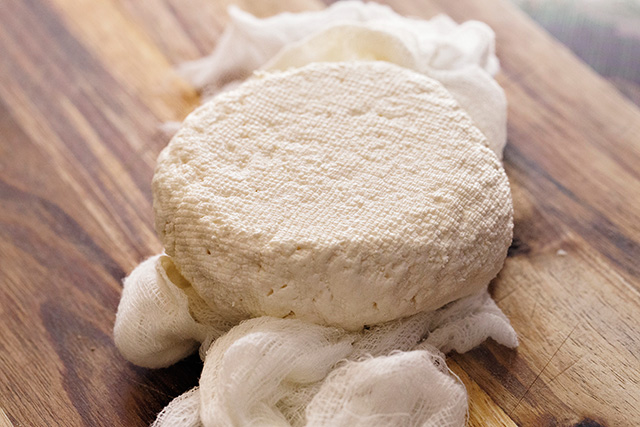Most of us consume milk on a daily basis. A quick stop at the service station shop to pick up milk and bread on the way from work is part of our daily routine.
Can you imagine a life without milk? Add to it secondary dairy products derived from milk, and the issue gets much bigger. Cheese, yogurt, ice cream, milk chocolate and cream are just a few of the dairy products we consume regularly. Unless you have some allergic reaction to milk (and dairy) or ascribe to some dietary restriction that prohibits dairy products, milk is part and parcel of our daily dietary life.
But have you ever thought about the first humans consuming animal milk? Of course we know that human babies drank human milk, but what inspired human beings to consume the milk from what must have been some wild animal? Was it thirst? Hunger, maybe? Or maybe it was just plain curiosity?
Where in the world did this event take place, and when? Who were the humans involved and what animal did they get the milk from?
I think we can safely assume that by purely observing antelope and other mammals, humans would have known that they periodically produce milk to feed their offspring. It is also quite possible that someone killed a female with an udder filled with milk and decided, for whatever reason, to taste a little (or perhaps a lot).
Most likely this incident happened before specific species were domesticated for their meat and milk, which meant that milk would have been a real treat enjoyed infrequently on the odd occasion of having killed the right animal. It was most definitely not part of the daily human diet back then.
The earliest definite evidence that humans consumed milk comes from shards of pots dating to the sixth or seventh millennia BC. Pots from south-eastern Europe, Anatolia (now in contemporary Turkey) and the Levant (the eastern Mediterranean that today would include Cyprus, Israel, Iraq, Jordan, Lebanon, Palestine, Syria and the Hatay province of Turkey) were studied intensively by a team led by professor Richard Evershed of Bristol University for trace material of the substances once stored in them. These shards contained fatty residues consistent with milk.
Originally scientists thought that dairying was a late addition to the Neolithic mode of life, occurring several millennia after the original domestication of animals and perhaps two millennia after pottery was invented.
But the new evidence from Evershed’;s study pushed dairying back to the same time as the appearance of the very earliest ceramic vessels in Asia in the seventh millennium BC.
This, in my mind at least, raises the obvious question: Which came first – the milk or the pot?
There is also evidence that shows Neolithic farmers did not only consume milk, but made cheese too.
Evershed’;s study of 11 archeological sites in the central Balkans revealed an increase in the proportion of adult animal bones over time. This is significant as most animals were slaughtered quite young, which is evident from the concentration of these young animals bones at sites where animals were kept for meat.
Allowing animals to mature, and thus finding adult bones at these sites, suggests that animals were kept for secondary products (milk) and perhaps for traction.
Also found at these sites were shards of perforated pots containing trace evidence of cheese (ie altered milk fats). This turned out to be a very significant finding, dispelling contending explanations for the use of the perforated pots.
To this day, the process of making cheese has not changed much; it starts with adding an acid or an enzyme such as rennet to milk, heating it a little to allow the protein to lump together, form curds and separate from the water (whey). To make the actual cheese, the whey has to be drained off, and the curds are pressed in perforated moulds to compress the proteins and drain off all water.
Back then, this process might have been discovered by accident.
Just think of the following scenario: Someone decides to fill an animal stomach (most likely that of a goat or sheep) not with water, but with milk. At that time, these small animal stomachs were popular vessels to carry water over long distances because pots would have been too heavy.
This specific individual at some point during his journey lifted the milk-filled stomach to his mouth wanting to take a drink. Imagine his surprise when he was confronted with something that resembled jelly-like curds floating in milky water. It would have taken this ancient man and his companions some time to figure out that the rennet in the stomach caused the separation of the milk into curd and whey. At this point, they would have needed a perforated object to drain the solids before figuring out how to turn them into proper cheese.
What was the worst fight ever over milk? According to the oral history of the Kiowas people of North America, two chiefs got into a disagreement over who should receive the milk-filled udder of a doe that was hunted. The loser felt so aggrieved over the fact that his position of status and thus his claim to the spoils were rejected that he commanded his people to leave the tribe. Hereafter, they were called the Àuzáthàuhyòp or Àuzáthàuhòp people. This means ‘;Antelope Milk Drags Heart on the Ground Move Off People’; or in shortened form: ‘;Disgruntled/Angered on Account of the Udders People’;.
This week’;s recipe is for a fresh cheese that is easy to make at home. It is called labneh and is usually made with one or more kinds of yogurt. I have also used the curds from over-fermented kefir to make this cheese.
This is one of Yotam Ottolenghi’;s recipes and represents very well the ingredients of the eastern Mediterranean, the very region we found some of the earliest evidence of cheese-making.
• 450 grams goat’;s yogurt
• 450 grams natural yogurt
• 20 black olives, pitted
• 11⁄2 tablespoon fresh oregano,
• 1 tablespoon parsley, chopped
• Grated zest of 2 lemons
• 1 small garlic clove, crushed
Stay informed with The Namibian – your source for credible journalism. Get in-depth reporting and opinions for
only N$85 a month. Invest in journalism, invest in democracy –
Subscribe Now!






